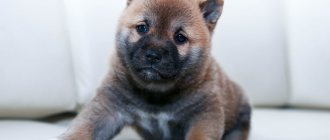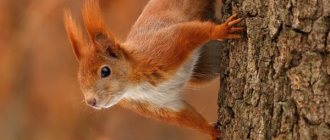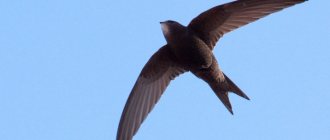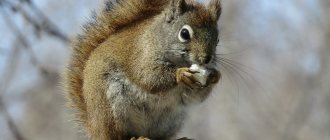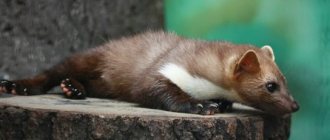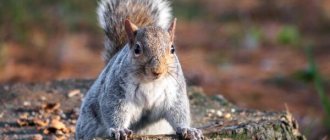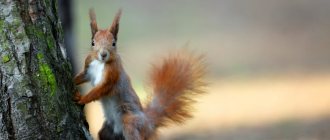On August 19, 1960, the whole country watched with excitement the launch of the second spacecraft-satellite. This excitement had a completely understandable nature: on board were two small dogs who were destined to become the first living beings to make orbital space flight. The next day, general excitement gave way to jubilation: the dogs returned - alive and unharmed.
Belka and Strelka made a great contribution to space exploration - the successful return of the dogs gave confidence that a person can also survive such a flight. Yuri Gagarin went into orbit a little more than six months later. Read about how Belka and Strelka prepared for the flight, behaved in space and lived after their return.
The most enduring
Belka and Strelka had competitors - other dogs could get on board. The special service specifically searched for mongrels - it is believed that they are less whimsical, know what the struggle for life is, and therefore are best suited for an important mission.
The following requirements were imposed on the candidates: weight - up to six kilograms, height - up to 35 centimeters at the withers, age - from two to six years, only females (it is easier for them to arrange a toilet). The color had to be light so they could be seen better on monitor screens. There were 12 dogs left in the final group. Scientists decided that two would go on the trip - the animals feel better and calmer in the company.
"We work for our visitor." Interview with the director of the Museum of CosmonauticsThe first female zoopsychologist. Meet Nadezhda Ladygina-Kots
After a veterinary examination, we began training at the production base of the Air Force Institute of Aviation Medicine. Over several months, the animals were gradually accustomed to long periods of time in a closed space and noise. They were taught to eat from feeding machines and not to tear off the sensors on special suits. The dogs endured high overloads on the centrifuge and vibration stand. Scientists monitored their condition around the clock.
The smartest, quick-witted and hardiest were Vilna (completely light-colored) and Kaplya (with brown spots). One of the scientists who worked with dogs gave them different nicknames. He considered that Belka and Strelka would be more suitable for world fame.
Belka and Strelka's flight into space
On August 19, 1960 at 11:44, the Sputnik 5 spacecraft was successfully launched on board with a capsule containing Belka and Strelka. They were delivered on board the ship in advance - 2 hours before the start of the flight.
Cabin with animals of the Vostok spaceship, 1960
The ship maintained the required level of air pressure, temperature and humidity. The air was also periodically purified - carbon dioxide was absorbed from it with a special reagent and oxygen was released. Feeding the animals was carried out twice a day and was a necessary condition for the flight to test the possibility of food intake and assimilation in conditions of weightlessness.
Flight director - S.P. Korolev
The condition of Belka and Strelka was monitored by a whole complex of medical equipment, which recorded the maximum possible physiological changes during the flight. They were also recorded in real time by video surveillance equipment, and the video itself was recorded on film on Earth.
This is interesting! The double crate design allowed the dogs to visually observe and hear each other.
Real names Belka and Strelka
What was this for?
The idea of sending animals, and then humans, into space came to Sergei Korolev back in the 1930s. But the bold idea came to fruition much later; it was preceded by many years of preparation.
In the late 1940s, when the country's rocket industry began to develop rapidly, the topic of human space flight gradually began to come to the fore. Sergei Korolev was then already the chief designer of Special Design Bureau No. 1. Under his leadership, scientists - the best specialists in the country - had to find out whether living beings could survive colossal loads without harm to their health.
Initially, monkeys were supposed to fly into space, but then it turned out that dogs are calmer, more trainable and normal in confined spaces.
Belka and Strelka: a trace in history
Belka and Strelka, after their perfect flight, instantly became heroes of television programs not only on domestic TV, but also around the world. The success of the flight takes on a truly worldwide scale. This achievement, in addition to filmed television programs, is recorded in many printed publications, many posters and postage stamps with hero dogs, books with a detailed description of the flight are issued, documentaries and animated films are shot to leave this flight in memory and tell about it to future generations. Monuments are being erected around the world to two dogs who made a historical breakthrough.
American pianist Van Cliburn with Belka and Strelka on the TV show “We Will Meet Again”
This event does not fall into oblivion even in our time:
- In 2010, the film “Starry Clouds” was released, filmed for a children's audience. Despite the fact that the script is somewhat different from reality, the main characters remain the same, fueling children's interest in the present events of the past.
- The Google search engine celebrated the anniversary of Belka and Strelka’s space flight by transforming the appearance of its page in honor of the memorable event.
- For the fiftieth anniversary of the event, a postage stamp was issued to commemorate the anniversary of the first successful orbital flight of dogs into space.
Video - Belka and Strelka in space
No less brave dogs
The flight of Belka and Strelka was preceded by many years of work by scientists with animals. Nine years before this event, male mongrels Desik and Gypsy set off on a suborbital flight. On July 22, 1951, a geophysical rocket with them soared to 87 kilometers 700 meters. After this, the head part with the dogs separated and took the animals back to Earth by parachute. Dezik and Gypsy behaved cheerfully after landing.
Six years later, on November 3, 1957, the second artificial Earth satellite was launched into low-Earth orbit. On board, the first living creature in space in low-Earth orbit is the dog Laika, whose return was not intended. The radio telemetry system constantly monitored her well-being, and this made it possible to draw a conclusion about how the human body would behave under similar conditions. Scientists have received their answers, and then it’s time to think about broader research and observe how animals behave when planted.
“The time will come when a spaceship with people will leave the Earth and go on a journey to distant planets, to distant worlds...” Sergei Korolev wrote in December 1957.
A month before the flight of Belka and Strelka, a tragedy occurred: as a result of an accident on the first stage of the spacecraft, the dogs Chaika and Lisichka were killed. Sergei Korolev especially loved the latter. Many heard how, before putting her into the cabin of the spaceship, he whispered to her: “I want you to come back.” It was decided to equip the next ship after the incident—the one on which Belka and Strelka flew—with an ejection pressurized cabin, which can now be seen in the Museum of Cosmonautics in Moscow.
After the four-legged pioneers, in December of the same year, the dogs Mushka and Pchelka flew into space. But their flight, as in the case of Lisichka and Chaika, ended badly: at the final stage of deorbit, the stabilization system of the braking propulsion system failed, which changed the descent trajectory. The secret facility with the animals risked landing in another country, so it was eliminated. After this unsuccessful flight, chief designer Sergei Korolev said that a person will fly into space only if the next two flights in a row with animals are successful. On March 9, 1961, the dog Chernushka flew into low-Earth orbit, and on March 25, Zvezdochka, which was accompanied on the flight by Yuri Gagarin. Having completed one revolution around the Earth, they landed safely.
Research involving dogs continued after Yuri Gagarin's famous flight. On February 22, 1966, the unmanned spacecraft Kosmos-110 was launched with the dogs Ugolk and Veterok on board. They survived 22 days in a confined space and successfully returned home. Their record-breaking flight showed scientists that such a long stay in weightlessness can lead to functional and structural changes in muscles, bones, and the neurosensory system that are not irreversible - eventually the body will return to normal.
In the Museum of Cosmonautics today you can see the “accessories” of some of these animals, the cabins in which they flew, scientific equipment, a model of the pressurized head of a geophysical rocket, newsreel footage of preparations for flights, and much more. But the main thing is that the stuffed animals of Belka and Strelka themselves are presented here. Everyone's favorites remained in peace and comfort until the end of their lives at the State Research and Testing Institute of Aviation and Space Medicine. Both dogs died at a very old age.
Flight result
The success of the flight, which lasted just over a day in orbit, and the good condition of the returning Belka and Strelka, made it more feasible than ever for man to begin to explore space. Scientists have obtained a lot of valuable data on the functioning of the body in space conditions. Although the dogs were subjected to stress during the flight, no serious abnormalities in their vital functions were recorded.
Condition of the dogs after the flight
However, due to Belka’s anxiety, which she showed during the flight, it was subsequently decided that the first human cosmonaut should first make only one orbit around our planet.
Photo of Belka and Strelka in 1961
Squirrel's reaction to flight
Preparatory stage
The dogs were prepared for the experiment at the Institute of Medical and Biological Problems in Moscow. Candidates were trained to live in small cabins in noisy conditions and in complete isolation. The dogs learned to get food from special machines and got used to clothing and equipment.
Food for dogs was developed by I. S. Balakhovsky. It looked like a jelly-like mass and contained all the necessary nutrients for animals.
The most difficult thing was to train dogs to live in a miniature space. To prepare, the dogs were placed in a metal container and kept for a long time in a prototype aircraft.
“Sometimes it was easier to euthanize”
— Experiments on animals had several purposes. Before launching a person into space, it was necessary to find out the limits of his body's capabilities. And who should we conduct preliminary tests on, if not on our “younger brothers”? The logic is simple: if they cope with the task, then the person may also be able to cope. There were many medical questions: how would the vestibular apparatus and circulatory system react to weightlessness, how would the body’s thermoregulation occur? Or, let’s say, there were fears that if cosmic particles entered the body, the nervous system could be damaged. Fortunately, it turned out that this was not the case. Of course, dogs are not entirely suitable for such experiments (after all, in terms of body parameters we are closer to monkeys than to dogs), but it was decided to use them. This tradition comes from the works of Academician Pavlov. Dogs are easier to train, and it is easier to choose those that are patient and diligent. We took simple mongrels from the vivarium - young and not very heavy, weighing 5-6 kg. And definitely “girls” - it’s more convenient to sew a suit for them to perform their natural needs. Particular attention was paid to coloring: during the connection with the Earth, the dogs had to look contrasting on the TV screen.
A so-called “flap” was made on the mongrels’ necks: the carotid artery was brought out so that sensors could be placed on it. Those whose “flap” was in the best condition were selected for the flights. Of course, many animals died at the testing stage - in centrifuges, in pressure chambers, etc. Sometimes after the experiment it was easier to euthanize the dog: after all, it was doomed to remain crippled for the rest of its life. Some institute employees took animals into their homes out of pity.
